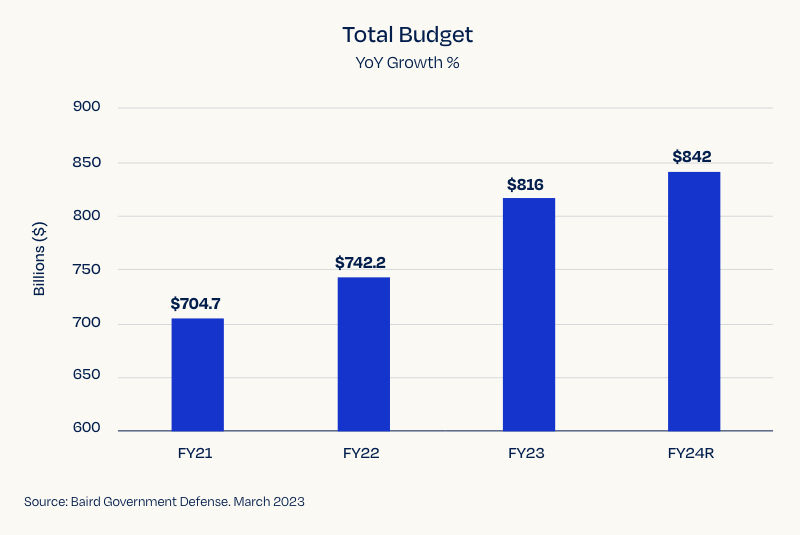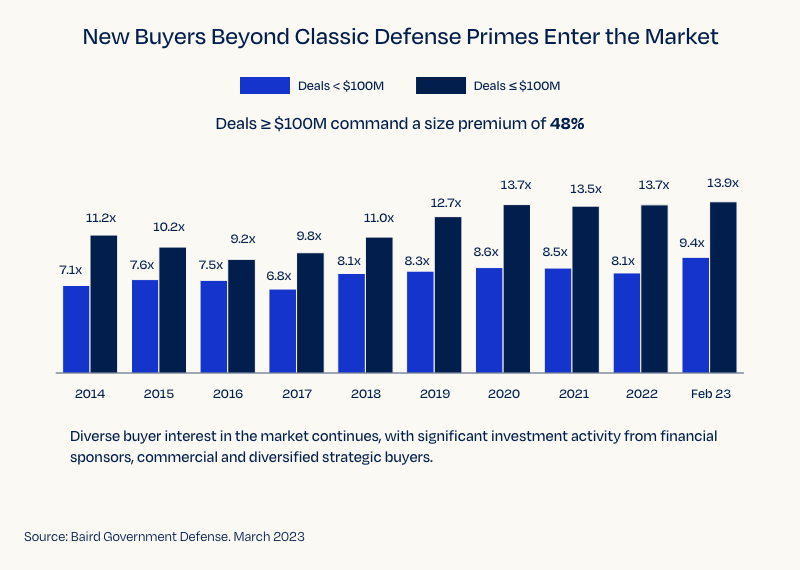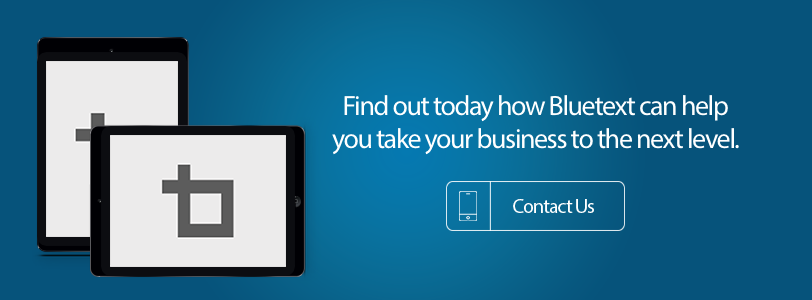Private equity firms are constantly in need of developing a new brand for their acquisitions, often including a new name, look, logo, and visual identity, along with a website and a go-to-market strategy to launch into the market. Along with private equity acquisitions often comes risk, from regulators, legislators, and policymakers, particularly if the acquisition is in a regulated industry like financial services, healthcare, or even defense.
Bluetext has worked with dozens of private equity firms to develop effective brand strategies and successfully launch those new companies into the market. Whether the goal is driving drives leads and revenue for new acquisitions, mergers, and rebrands, or positioning a new brand in for growth, we’ve seen the challenges that they face, especially with regulators. We’ve often partnered with The Vogel Group, which specializes in assessing risk for PE firms, to help those companies find the right path to success.
Contact us Today!
When the word among private equity firms spread two years ago that one of the many companies that helps defend individuals’ financial security from identity theft may be for sale, it piqued the interest of some of the larger private equity firms in the market. The target acquisition would bring a ready-made brand to the buyer from which to build and grow its market share. That’s where the partnership between The Vogel Group and Bluetext comes in to play. When working with our clients on the opportunities and risks for an acquisition, we work together to determine if the purchase makes sense and how that company needs to be repositioned in the market to achieve PE’s business objectives.
PE firms saw two large hurdles to overcome if they wanted to acquire the company. The first was on the regulatory and legal side. By virtue of having one foot in the financial services sector and the other in the privacy and identity theft defenses world, any company in that space faces scrutiny at the federal level by the Federal Trade Commission and the Consumer Financial Protection Board—both of which take in complaints on a daily basis against companies that protect against identity theft.
The second was the brand itself. For the PE firm wanting to take advantage of the acquisition target’s name recognition and customer base, it would also have to contend with FTC charges that it had engaged in false advertising, and the fact that it had far more complaints with the Better Business Bureau than similar services.
To move forward with the purchase meant a thorough risk analysis in Washington that reviewed the possible exposure before regulatory agencies as well as Congress and a marketing and brand strategy that could reposition the company away from its past reputation. The winning bidder on the acquisition was one of the leading cybersecurity firms on a global scale. Its solution for how to upgrade the identity protection brand was not to rename the company, but rather to pair it with an existing brand that was a fit from a business standpoint and that would soften its image and give it more credibility – a halo effect that would allow the positives to overtake the existing perceptions and legacy.
The buyer performed an extensive brand audit to find the best fit within its portfolio of products and services. It smartly did not want to abandon the acquisition’s name altogether – it had far too much brand equity. And even though, like many companies in this market, it also had faced criticism from regulators and the Better Business Bureau, its market penetration was strong enough to overcome those reviews with the right positioning.
So instead of starting new, it looked for a line of products that complemented the new acquisition’s solutions and created a co-marketing strategy to soften its image. That other branded line of products was a consumer-grade suite of cybersecurity products that would have a target audience similar to those who need protection from identity theft. As part of its repositioning, it launched the brand strategy with a message that is loud and clear: The acquisition and the cybersecurity brand “are now part of one company, with one mission. More protection for the digital threats of today’s connected world.”
This positioning inspired a new logo for the brand, that never lets buyers forget that two companies now lived side-by-side as part of the larger company’s family of products. The marketing campaigns taking this new brand to its customers is laser-focused on keeping the two brands locked together – ensuring a larger market and a positioning strategy that move away from its legacy.
Want to learn more about how Bluetext and The Vogel Group can help you with your acquisition and brand strategy? Contact us today!
When undertaking a branding process for a new or just-acquired company, many Private Equity clients are desperate to create their new logo and consider it a project complete. Yes, the logo is critical. But branding is less about the actual logo, and more about the visual story and impact that logo demonstrates to the market. This is especially the case with companies that have had a brand and logo, but through a private equity acquisition or other M&S activity, need to quickly change course and differentiate themselves from their former affiliations. Branding agencies like mine have a process that includes messaging, positioning and brand meaning, all captured through a series of exercises. While the words matter, the attitude and meaning behind a brand is what differentiates it and sets it apart. Think about visual impact,
I read a blog post recently talking about word of sight replacing word of mouth. It was spot on. Today, what you see matters much more than what you read or what you hear. Think about when scrolling through your Facebook feed. Three paragraphs about a great Hawaii vacation barely gets a notice, but a great picture at sunset sipping a cocktail with a great caption is liked by everyone. Attentions spans have shrunk and we are all visual learners and thinkers.
As your brand ambassadors, every stakeholder on your team, from executive management to sales to support to the front desk needs to understand the meaning of the brand and why it is important. It is a branding agencies’ job to work with the team to distill that meaning and make sure that it comes to life through the branding exercise in all of your public facing communications. Think of the Facebook generation as your audience. You want them to stop, notice your brand, and give you a chance to tell them your story. Fewer words, more visual meaning is critical. Brand managers and marketers need to think about this and give their work a critical eye.
Unless you have created groundbreaking software, it is becoming more and more difficult to differentiate. The visual impact and meaning behind your brand are critical for success. The right branding agencies can help extract this from your story and give you a brand that can differentiate and ensure success as you grow your business in 2018. The writing is on the wall; make sure that your audience sees it.
Looking for an agency to take your branding to the next level? Contact us.
Does GovCon need marketing? Or is it really all in the proposal?
Find out how why we think marketing the single most important tool federal contractors have to play big in D.C. and leave small-sized perceptions behind in a series brought to you by Bluetext & Baird.
Is your marketing making your D.C. presence seem smaller than it is?

“Why do we need marketing? Everything that matters is in the proposal.”
While possibly an odd question, it isn’t out of line for the way contractors operate. After all, awards are decided by very specific and very transparent evaluation of proposals, and, not once in a debrief has any evaluator ever said the difference was an incredibly impressive display ad on Washington Technology.
But it’s exactly the type of thinking why most federal contractors squander their single most important opportunity to step out of the sea of sameness.
Because in government contracting, marketing isn’t just important. It’s absolutely essential.
And most of us are doing it completely wrong.
Why We Get It Wrong
Perhaps the reluctance to embrace marketing is that most contractors do it wrong and don’t understand how to make marketing most effective when marketing to the core audience of federal contractors. The marketing isn’t full cycle and aligned to the pipeline. It’s insular. It’s more customer-following than demand-generating. It’s focused on the safe and the bland, not the intriguing.
And generally speaking, it has all the variety of a Baskin Robbins that’s out of 30 flavors. Everybody is innovative, everybody is a great partner, and everybody solves the most complex challenges of the federal government. Every company is exactly what you’ve asked for in the proposal, whether we’ve actually done it or not and whether we can even find the client site without Google Maps.
Why? Because we market to say we are what the prop says and what we think the government wants repeated back to it.
But there is nothing more valuable than thinking a level deeper than the bromides, thinking not about just how you answer the mail, but what makes you you.
In federal contracting, market to stand out. Not to fit in.
Why Marketing Matters in Government Contracting

By design, federal contracting is a market designed to create commodity.
The government doesn’t want a single bidder for any services, nor does it explicitly want to disadvantage any competitor. (At least, this is the way the system is designed). As a result, procurements are much longer and more transparent than B2B. Federal contractors all respond to the same RFPs, work with the same labor categories, same general pricing targets and promise to deliver against the same statement of objectives. Contractors talk to the same small handful of people that sit on the evaluation board and we repeat all the post-contact factors.
And this is where marketing matters most. When you get squeezed into commodity and differentiation is all but impossible, distinction matters.
Marketing Is Your Biggest Opportunity Stand Out
“You may have any attributes you like,” the famously rigid Henry Ford might’ve quipped if he marketed contractors rather than made cars, “so long as it’s innovation, partnership, and commitment to mission.”
Because contractor marketing is often so insular and customer-following, we recite the bromides of the government. Innovation is important. Partnership. Mission above all. These are category factors. Things true of everyone in your category. After all, have you ever seen a company position as proud Luddites, terrible partners or only driven by the SOW?
So, no matter how much you spend, all you’re doing is telling the market and your own company that you’re just another contractor.
But in marketing, you can be distinct.
The big tagline. The great brand name. The incredible brand promise. The forward design makes you stand out from the sea of templated design. The customer-focus on what you enable them to do, not the recitation of your biography of more than X years.
In marketing, federal contractors can be distinct, the live musician in a sea of elevator music, even though they’re not differentiated on capability.
Marketing Means You Start Ahead
Because the first question the evaluation board ponders when a prop is reviewed shouldn’t be ‘who?’
Marketing builds an identity, and a feel for your business. If you do it right, it makes you seem larger than you are. It makes you distinct, so your prop gets read with a positive feeling of your company, not the prove-it-to-me approach to an unknown bidder.
At least at the current time, evaluation boards are people, not AI. People can be influenced. The small handful of people who will decide awards may control millions or billions, but they’re influenced into buying major programs just as they are peanut butter. Evaluators, like everyone else, are comfortable with the brands they know. Building that relationship starts with building your brand. (And of course, if your marketing is focused on the RFP, you’re already behind the curve. We’ll get further into how to align your marketing to your pipeline and how to influence perception well to the left of the RFP later).
Be the company they want to award, not the company they have to be talked into.
It Creates an Identity for Your Company

It’s not just the government that pays attention to your marketing.
It’s potential investors, too.
Marketing is the most important expression of how you want your company to be perceived. No one will ever consider your company more exciting and impressive than you do. Your marketing should set the highest bounds of how you want to be thought of.
It’s not just for your customers and your teammates. It’s your current and future employees, those invaluable assets that actually do the work for federal contractors. The same ones you are unlikely to be able to pay much more than anyone else bidding for the experience and qualifications, due to the commoditization of labor in federal contracting. Offer them an opportunity to work in something that’s meaningful in a way that doesn’t sound like everyone else. (And if the phrase, “It’s more than a job, it’s a career,” appears on your website, please stop what you’re doing, delete it, and then return.)
It becomes a clear statement of who you are, what you’re trying to achieve, and how they’ll play a part in incredibly big stories. Most employees, particularly those that want to support the government, want to be a small part of a small story. Marketing is where the big story gets defined.
Because in a sea of sameness and industry lifers, the ability to be distinct is the single greatest opportunity any contractor has.
“Baird’s Government & Defense team is a leading M&A advisor to the sector. Since 2018, we closed 64 transactions totaling over 23 billion in value. ”
About BluetextBluetext provides integrated communications services designed to help clients connect with key audiences, reach new communities, enhance their brand and protect their reputation. With deep expertise leveraging many diverse marketing strategies, we utilize every channel to attack the most critical challenges facing our clients. From repairing damaged reputations to connecting with key government decision-makers to driving product demand, our clients know that the team at Bluetext will help them achieve their goals with measurable results every step of the way. |
About BairdBaird is a leading global investment bank with more than 400 banking professionals in the U.S., Europe and Asia. We provide corporations, entrepreneurs, private equity and venture capital firms with in-depth market knowledge and extensive experience in merger and acquisition, restructuring, debt advisory and equity financing transactions. Committed to being a great workplace, Baird ranked No. 23 on the 2023 Fortune 100 Best Companies to Work For® list – its 20th consecutive year on the list. For more information, please visit Baird’s website at www.rwbaird.com.
|
Here at Bluetext, we’ve seen our share of M&A’s. One of our first big assignments, when we launched the agency seven years ago, was to relaunch ITSolutions – a roll-up of nine separate IT government contracting firms – into a new unified entity that we rebranded as Acentia. The brand strategy we developed worked well for the new company and Acentia achieved its management’s goal of being acquired. We have since applied our rebrand process to a variety of new M&A-driven organizations, including the GE spinoff of its Rugged Embedded Systems into Abaco Systems.
The one thing that we have learned is that M&As are tricky waters to navigate, with a wide variety of financial and legal hoops to jump through to seal the deal, and the challenge of stitching together two separate brands into one cohesive brand story – or splitting off a new brand – is a beast of its own. But the payoff can be enormous for our clients, ranging from accelerated growth to a rewarding financial transaction.
While a successful rebrand for an M&A is not easy, given the right approach and process, it can be a gamechanger. There are four critical elements that we’ve found to be critical to a successful M&A rebrand.
Case study coming soon.
Many companies turn to Bluetext for a rebrand to increase visibility and market share, to better compete against other major challengers, and to enter new markets with a compelling message. In the case of some of our clients, the goal is to launch their product or service into the market with a look and feel that will attract attention and result in an acquisition. It’s always gratifying when our work pays off for our clients.
So we like to brag just a little when our rebrand clients succeed in a transaction that takes them to the next level. That’s the case with NetWatcher, a mid-market cyber-security service, that was just acquired by Qualsys, a cloud security provider that has been making a lot of noise in the market.
Our client came to us two years with a service that presented a new approach to the mid-market cyber challenge facing many medium-sized businesses: How to protect against threats such as weak passwords, unsecured assets, unsafe employee behavior, and outdated software that leave their networks vulnerable to attack. Their solution was a network appliance that monitors traffic inside the firewalls for anomalies that could spell trouble.
As the main focus of the rebrand, Bluetext developed a brand look and feel and name – NetWatcher – to reach the large mid-market audience the company was targeting for growth. We designed and built a new website designed to help customers and MSPs – managed service providers who are key channel partners for the business – understand the benefits of the solution to their organizations. And we launched this new brand at the MSP World Conference in Las Vegas. During the awards portion of the conference, NetWatcher was honored with the “Best in Show” award for its innovative and promising solution designed specifically to address the security needs of small and medium-size businesses.
Congratulations to the NetWatcher team for building a successful new brand in the crowded cybersecurity space, and for achieving your goal of an acquisition by a major player, taking your solution to an even larger audience. Bluetext is proud to have been a part of your success.
Looking to rebrand so you can rise to the next level? Learn how Bluetext can help.
Bluetext has always prided itself as one of the leading naming agencies in the U.S. market. Our laser focus is on how a brand communicates its key attributes through the look and feel of its visual identity, and of course, through the name itself. Naming is, in fact, one of the more challenging elements of a brand, and the one that often stumps top branding agencies. There are several reasons for this, including finding a URL that is available along with the trademark.
That’s why we were so gratified to learn that Bluetext has been tagged as one of the top 10 naming agencies in the market by Clutch, the leading agency review site that provides market insight to guide business buying decisions. Clutch recently analyzed agencies that provide naming as part of its services and divided the leading contenders into those that are proven market leaders. Of the hundreds of agencies that Clutch evaluated, based on the ability to deliver, strong reviews, and focus on service, Bluetext ranked as number eight on the list of top agencies.
One of the reasons we believe that we rank so high on the Clutch list is our proven methodology that delivers strong name options for each of our clients who are seeking to rebrand either an entire organization or develop a naming system that includes products and services. We’ve renamed and rebranded major corporations in the technology, defense, consumer and enterprise sectors, as well as challenger brands, start-ups and new divisions and product lines. We seek to understand our client’s place in their markets as well as where they aspire to be in two to five years. Our proven process includes a thorough analysis of the competitive landscape and how a new name can help a brand stand out in its market. It also assesses where the market is heading, and how the right name can position a brand for success.
But don’t just take our word for it. Read through the independent analysis from Clutch and the various recommendations of our clients. They tell our naming story far better than we can.
In search of a new name for your brand? See how Bluetext can help.
You never get a second chance to make a first impression is a phrase that holds true for brands now more than ever before. Invariably, it is your choice of font that can make or break that initial brand experience – a choice that is simultaneously the first and final layer of influence a brand has between the user and the experience itself – and one that has a much louder voice than the words behind it.
Not too long ago, there were only a handful of available fonts – thanks to Google, designers can now choose from thousands – allowing branding agencies to design unique customer experiences that can more accurately reflect and differentiate your brand. As great as this sounds – it has only served to make that process even more challenging – and this has become a critical component of visual language that can no longer afford to be ignored. But there is a lot more you need to consider before making that decision – and that starts with understanding the hierarchical relationship between typeface, typography and font.
The term typeface is used most interchangeably and frequently confused with the term font when in fact typeface is a particular design of type, where a font is a typeface in a particular size, weight or style. To most it is a very personal choice – and my favorite is Helvetica – but with so many awesome fonts in the family – it’s impossible to pick a favorite – as a self-proclaimed font snob, I think it’s just that perfect.
And while typefaces can be categorized into many different sets – within the context of digital branding we need only to consider Serif or Sans Serif – and choosing one versus the other is the very first step in establishing the non-verbal voice of your brand.
Serif Fonts – like Palatino – have a small line or flourish attached to the end of a stroke in a letter, number or symbol and are often used to illustrate establishment and tradition.
Sans Serif fonts – like Helvetica on the other hand – are devoid of these fancy strokes and flourishes making them a first choice among minimalist designers trying to evoke a more modern brand experience.
Typography is the art and technique of arranging type in order to make the language it forms most appealing to the user’s overall experience. Wikipedia defines it as an art form that can manipulate the significance of what it communicates – a definition that most digital first branding agencies like Bluetext might consider the holy grail of developing a brand identity. You need to consider very carefully how typography will fit into your overall brand architecture – it’s hard to imagine many scenarios where your brand will is not going to rely on it to make that critical first impression. To learn how to make a great first impression, reach out today:

Top branding agencies are always looking for new and refreshing approaches to logo designs that resonate with customers. Every designer’s dream is a new logo that is memorable and unique. But customers react to logos that interesting and different, but not too different. If a logo adheres to a style that is out-of-date or too far out of the mainstream, it may stick out from the crowd, but it won’t generate the positive feelings that it would if it were within the boundaries of the top logo trends that are hitting the market. With that in mind, here are six top logo trends that we are seeing both with our clients and across the industry:
- Flat Designs Retain Their Strength. When Microsoft released its latest new logo, the design was flat with no shading or 3-dimensional effects. The result is a logo that is straightforward, maintains its integrity and brand equity, and looks good across all channels and in all sizes. It’s also easy to print and reproduce. A flat design shows off the brand and colors well and shows off the brand in its simplest form.

- Negative Space is Your Friend. Pinterest, Instagram, Toyota and scores of other iconic brands all use negative space – sometimes with hidden shapes and symbols includes. As an article in Lifebuzz.com reveals, the three ellipses in the Toyota logo represent the heart of the automobile, the technology, and the customer. More importantly, negative space can draw attention to the brand in a way that is memorable and different.

- Stacking is Back. For many years, the logo with letters had to be simple initials in a simple design. But as a way to grab attention in a way that stands out and is easy to see and absorb, stacking can be a strong alternative – often with different fonts for each word. This offers a solid way to highlight different fonts to challenge viewers while giving them something they can quickly comprehend. Here’s an example of a recent refresh (minus the different fonts) from the American Library Association.

- Turning a Flat Logo Up a Notch. One recent trend is taking otherwise flat logos and adding a two-tone approach to add depth to the color but also to give it a hint of three-dimensionality. Dividing symmetrical images into two “zones” of shading gives depth and visual interest to a flat design. It can also add a symbolic touch to convey the brand’s core mission and direction. Check out how Pineapple Resorts turned its logo up a notch to make it more distinctive.

- Go Wide. Shapes that elongate from right to left are thought to be more recognizable for humans that narrow, tall images. With online platforms (such as websites and social media) favoring a wide design, strong brands are turning to this approach with their logos. When combined with contemporary fonts and colors, it can also convey a brand that is on the move and ready to dominate its market.

Want to explore how to apply top logo trends to your brand? Bluetext can help.
As every top branding agency knows, the brand style guide is a key component in a brand’s visual identity. It sets out how brand elements, including color palette, imagery, iconography, and layout should be incorporated into every piece of collateral or content that represents the brand. In essence, it’s the brand bible for every designer and marketer in the organization.
Yet, for a typical top branding agency, it’s often an afterthought. Only after the new brand elements are designed, options are provided to the client, the visual identity is applied to the website, collateral templates, and signage, and all is approved, does the team turn to the style guide. And even then, it is often lacking in the type of detail and content that will make it useful for more than a brief period. It needs to be thorough and future-proof.
Let’s face it: The brand style guide isn’t the sexy or fun part of the project. Oftentimes, it’s delivered as a thinly printed document and other times as a PDF with limited detail. We understand that digging through a lengthy document to find out precisely how to use the logo, fonts, and imagery can be frustrating. Here, then, is the Bluetext guide to a good – and useful – brand style guide.
- Make sure the style guide is comprehensive. The goal of the guide is consistency, in how the brand is represented regardless of platform, outlet or venue. It will be used by a wide variety of people, ranging from employees to partners to media. This doesn’t mean it has to cover every random or infrequent scenario, but more detail works in your company’s favor.
- Go deep in coverage. Even the term “brand guide” is sometimes misleading. While it is important to include details on the specific usage of a creative asset, such as how much white space needs to pad a logo or how a logo should play out depending on the background color, this should be only a part of the what the guide includes. Don’t neglect core brand-building guidelines, such as what the organization’s tone and voice need to be in different contexts, or how employees should use branded imagery on social media. Provide enough detail so that anyone reading the brand guide from cover to cover will feel like an expert on every aspect of the brand.
- Update the guide on a regular basis. With the prevalence of eBooks, articles, and infographics, brands are experiencing a faster rate of evolution than ever before. That means it is important to do a regular review of the guide to keep it up to date.
- Make it easy to find, share, and update. Many style guides look great in a printed, bound volume. But those are hard to find, hard to distribute, and really hard to keep updated. And if the brand guide requires time and money to update, executives will be reluctant to refresh the guide to match their evolving brand until they absolutely have to.
Our recommendations as a top branding agency: Make the style guide a dynamic window to your brand. Include intangible elements that come from the brand’s core message platform, like tone, voice and the types of language to use. Use a digital platform that is easy to share and easy to update. Make it comprehensive. And make sure you review it at least once a year.
Style Guide Examples:
Learn How Bluetext Can Help With All of Your Branding Needs!
As digital marketing evolves and new channels emerge to target business, consumer and government audiences, the pressure is on marketing firms to push clients into waters that are sometimes deep and potentially un-chartered. Let’s face it…another eBook or press release just won’t cut it in 2017. If those are the ideas coming from your marketing firm then it is time to shop for a new one.
Recently my partner Jason Siegel wrote a great 2017 Survival Guide blog https://bluetext.com/survival/ which highlights several areas that marketers need to be thinking about. Make sure to check it out.
I recently had a chance to visit the National Retail Federation’s 2017 BIG Show in New York. It was a great event and demonstrated how marketing firms can think outside the box at an industry conference that many would consider very traditional. Here are a few ideas that hopefully you will hear from your agency in the months ahead:
- Remarketing lists for search ads (RLSA), as defined by Google, is a feature that lets you customize your search ads campaign for people who have previously visited your site, and tailor your bids and ads to these visitors when they’re searching on Google and partner sites. If you dipped the toes in the water with re-targeting in 2016, then in 2017 it is likely that you will begin to hear about RLSA from your marketing firm.
- Instant Articles from Facebook. If you spend any time blogging or creating valuable content, the key is to find as many channels as possible to distribute it. With Instant Articles from Facebook, you hit a world of users that may not have been touched in the past, you can distribute easily, and you get solid analytics to see what how the content is performing. It is this continued innovation from companies like Facebook that marketing firms should be presenting to you on a regular basis.
- The continued emergence of augmented and virtual reality. This is an area of marketing technology that will cross the chasm in 2017 and go more mainstream, as more companies want to create unique and immersive customer experiences. As budgets go more digital, it is critical to think about all of the unique ways that virtual reality can impact revenue. Digital briefing centers, gamification, customer service – all of these areas can be impacted positively through augmented and virtual reality.
We are 30 days into 2017. Has your agency recommended any new ideas? Time is ticking and the last thing you want to do is look ahead to 2018 planning and have a wish list of ideas that stayed on the shelf for another year…





